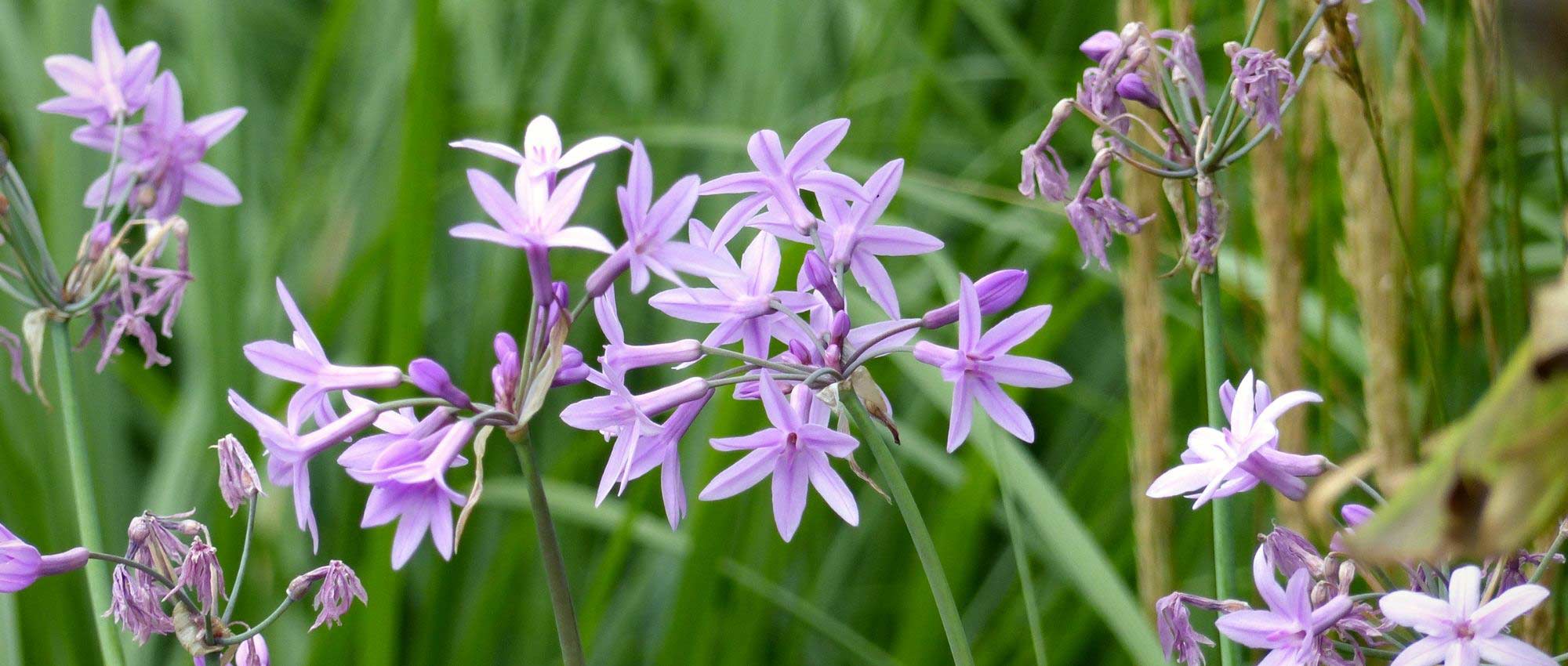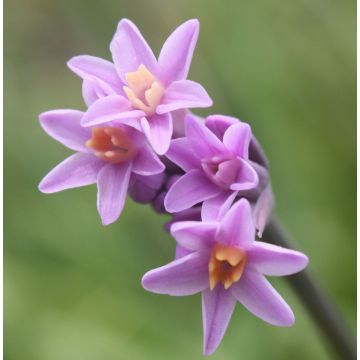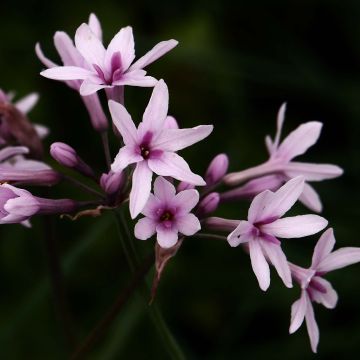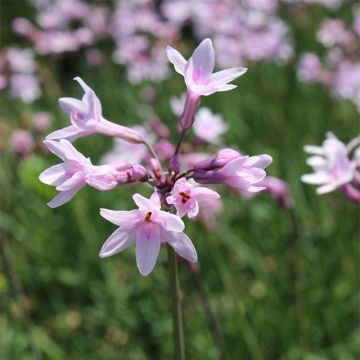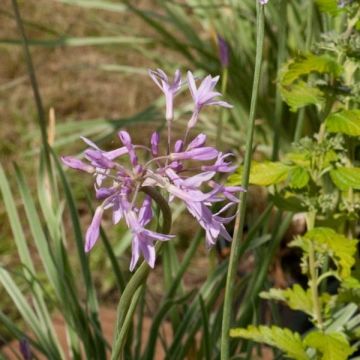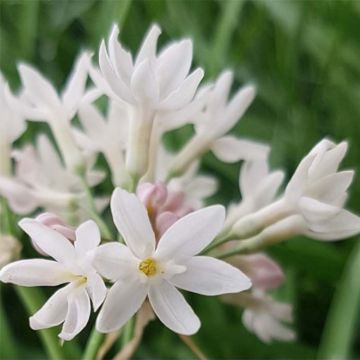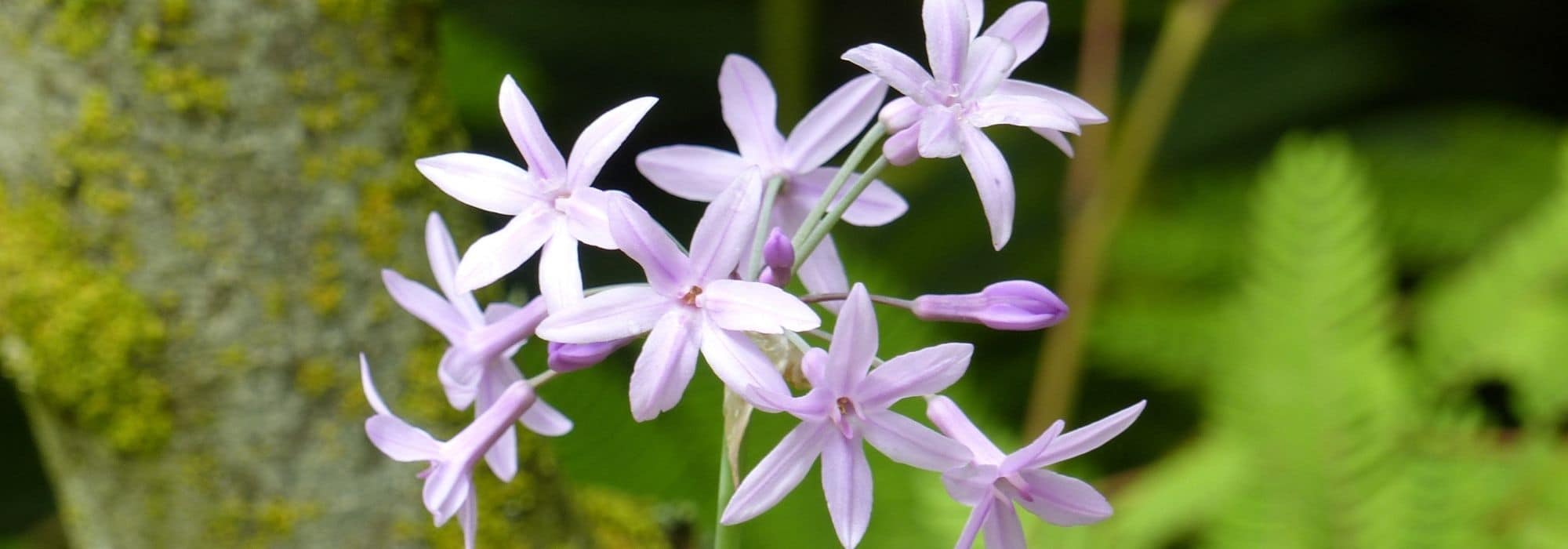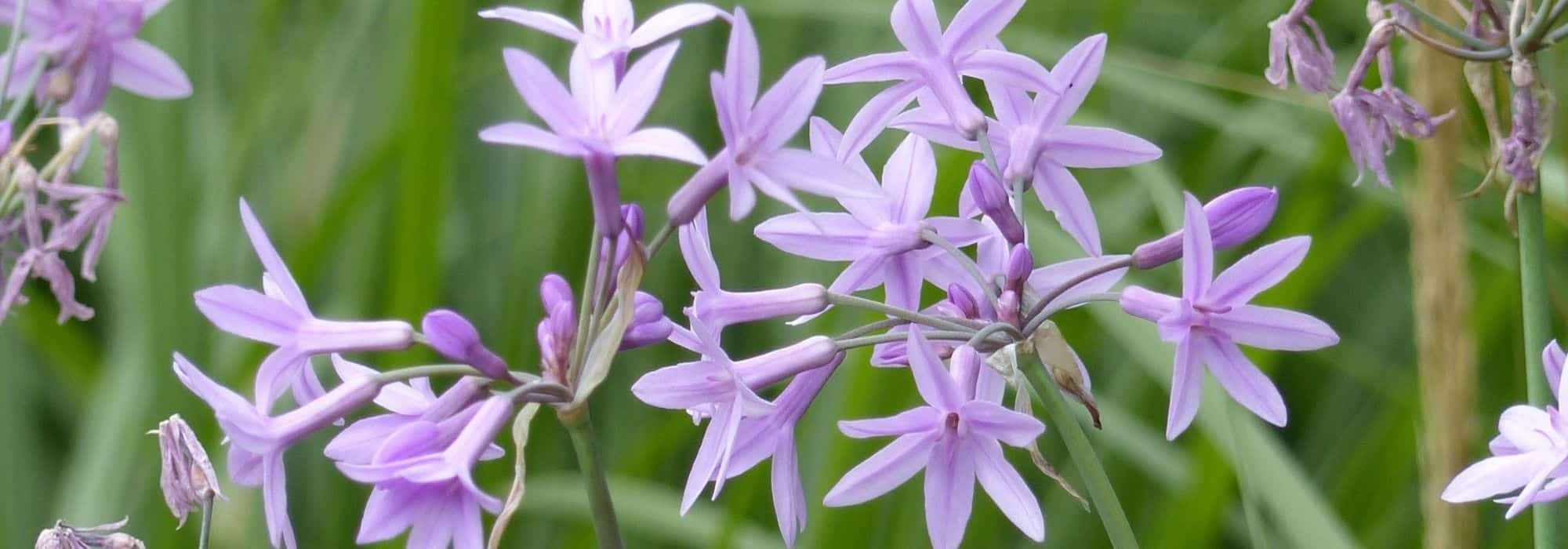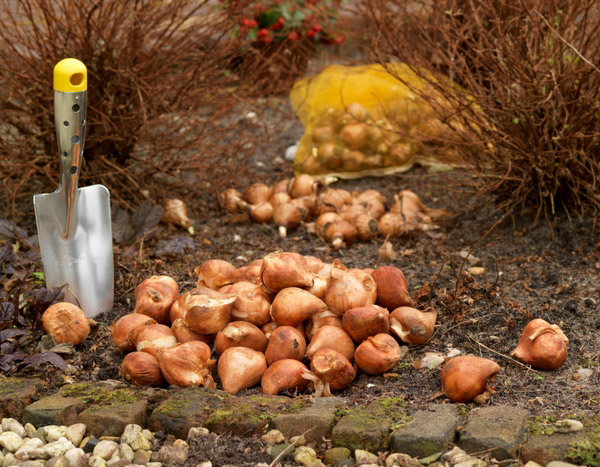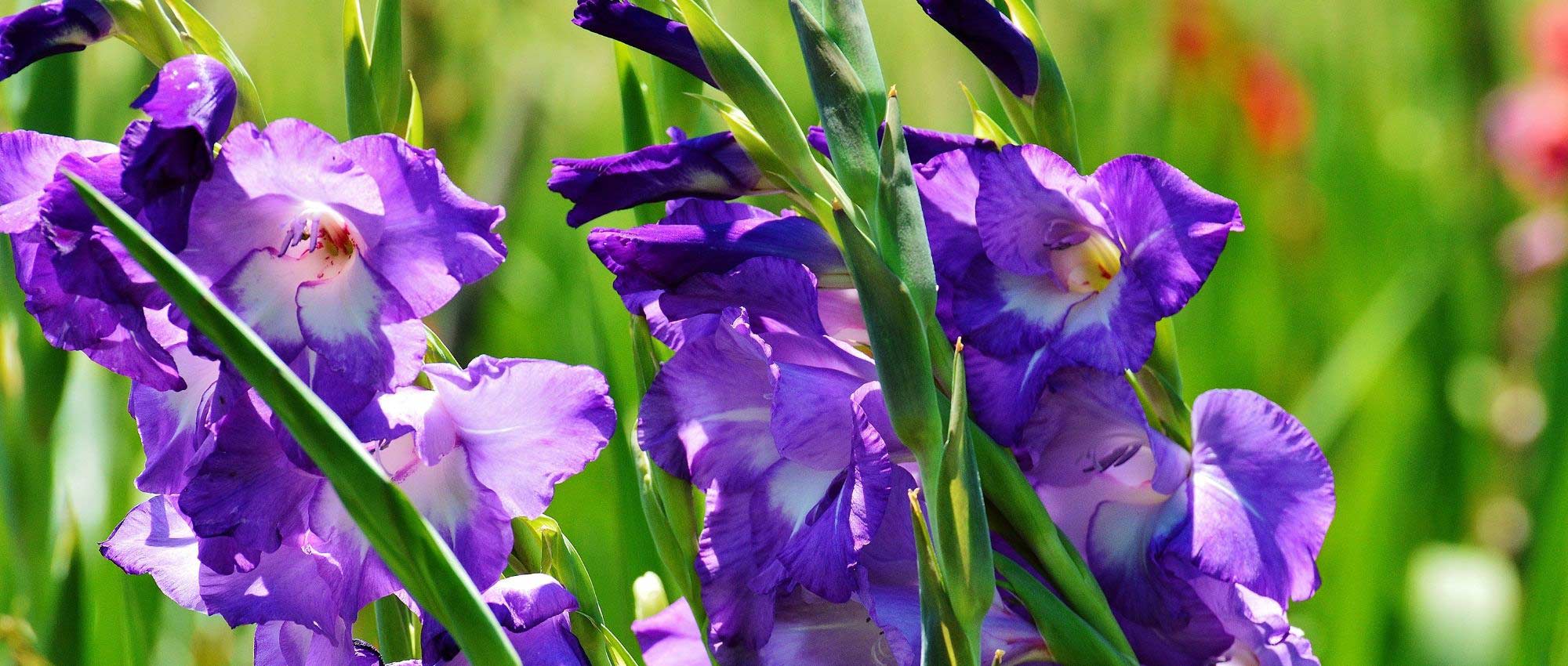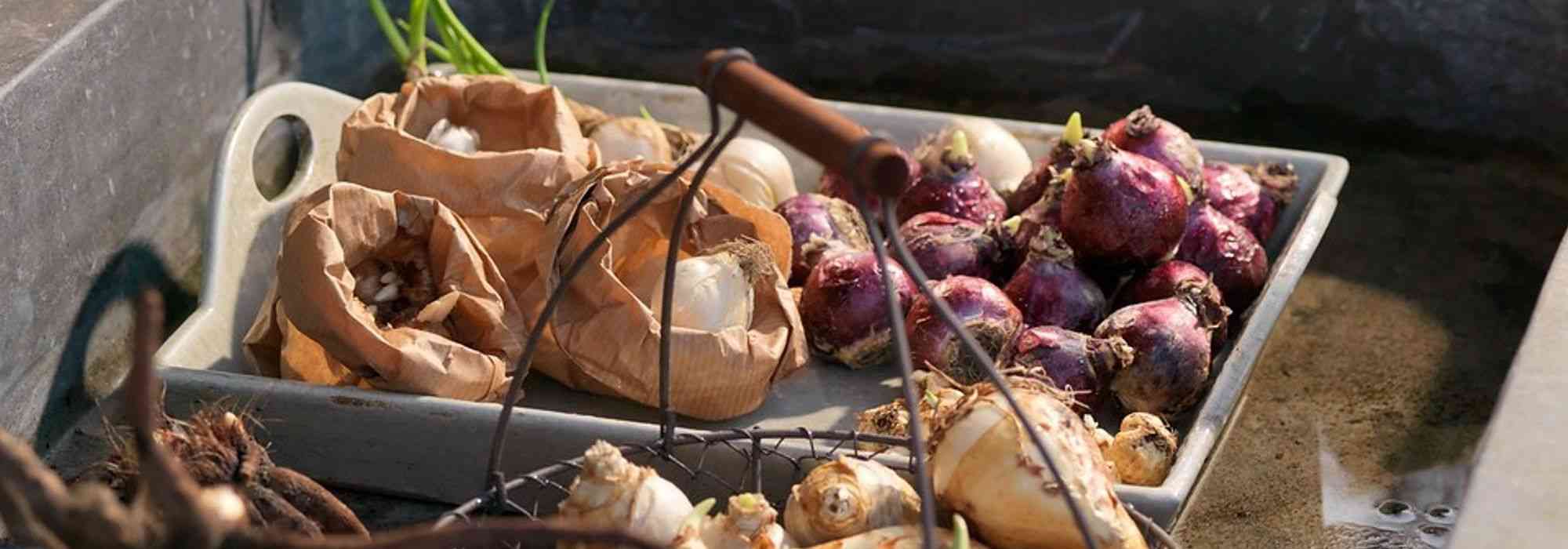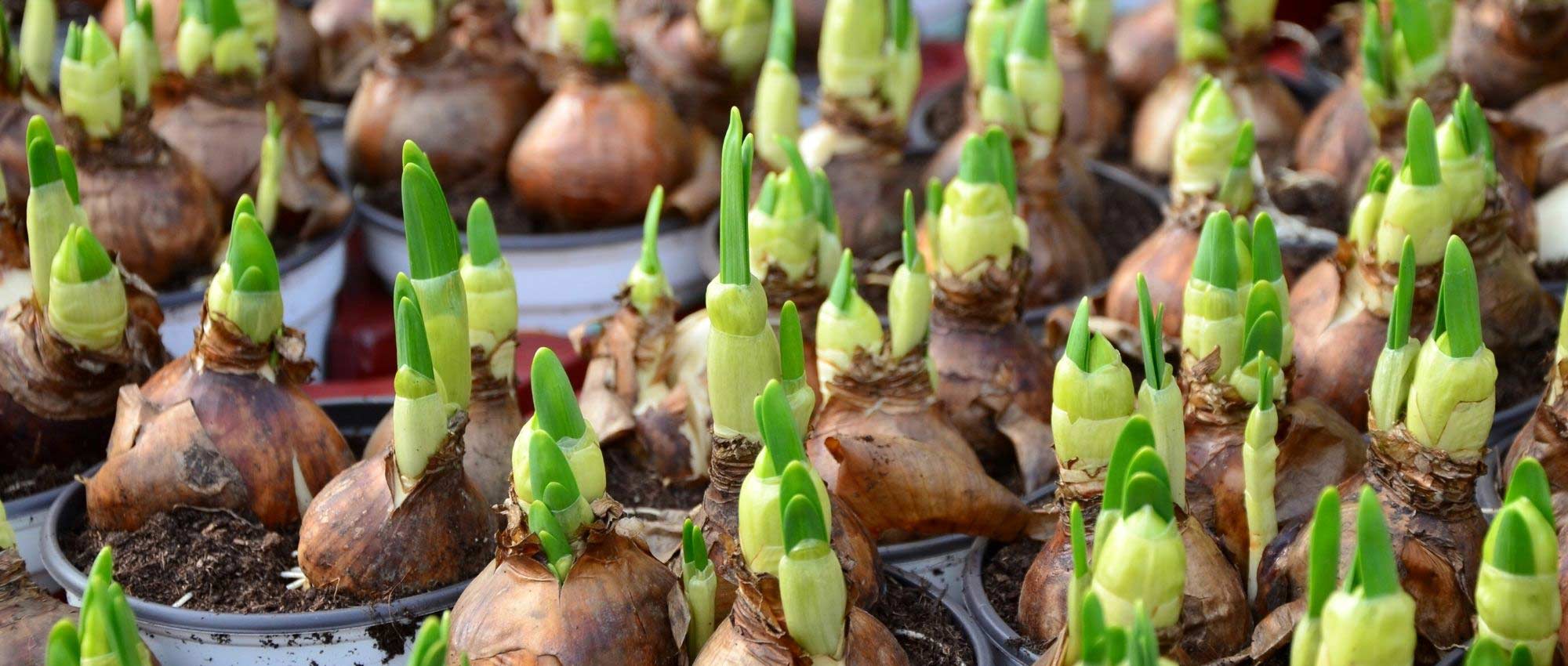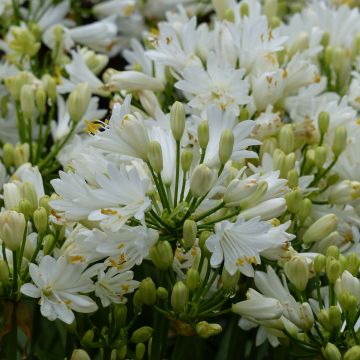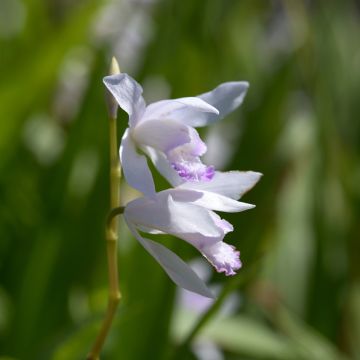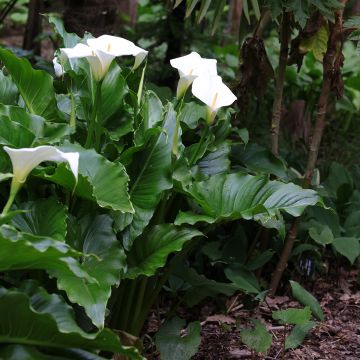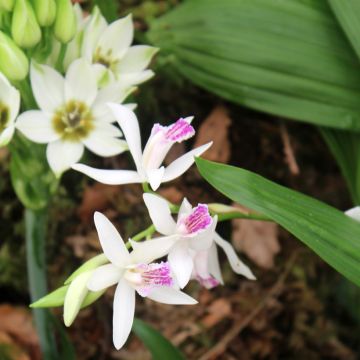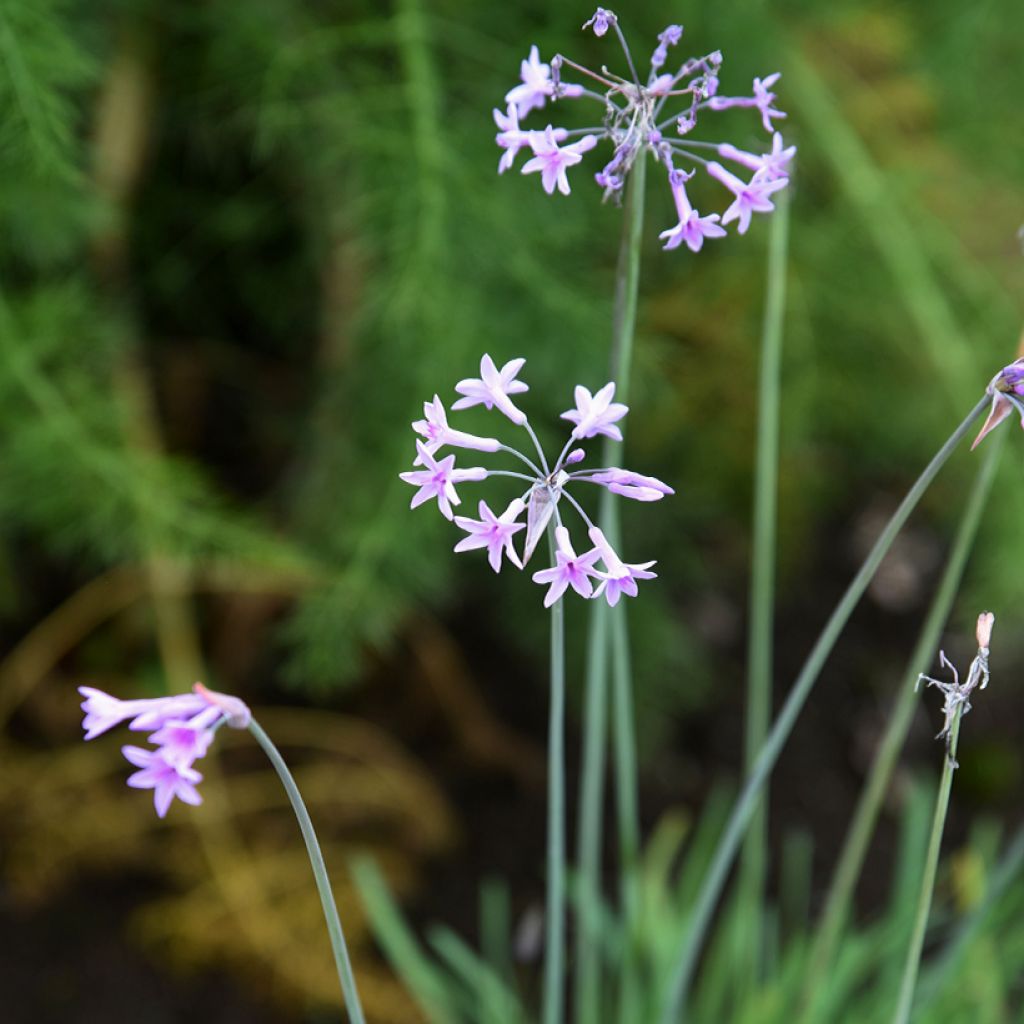

Tulbaghia Fairy Star - Society garlic


Tulbaghia Fairy Star - Society garlic
Tulbaghia Fairy Star - Society garlic
Tulbaghia 'Fairy Star'
Society Garlic
Special offer!
Receive a €20 voucher for any order over €90 (excluding delivery costs, credit notes, and plastic-free options)!
1- Add your favorite plants to your cart.
2- Once you have reached €90, confirm your order (you can even choose the delivery date!).
3- As soon as your order is shipped, you will receive an email containing your voucher code, valid for 3 months (90 days).
Your voucher is unique and can only be used once, for any order with a minimum value of €20, excluding delivery costs.
Can be combined with other current offers, non-divisible and non-refundable.
Home or relay delivery (depending on size and destination)
Schedule delivery date,
and select date in basket
This plant carries a 6 months recovery warranty
More information
We guarantee the quality of our plants for a full growing cycle, and will replace at our expense any plant that fails to recover under normal climatic and planting conditions.
Would this plant suit my garden?
Set up your Plantfit profile →
Description
Tulbaghia 'Fairy Star' is a compact variety of Tulbaghia, notable for its long-lasting, pastel pink, star-shaped flowers. This small bulb grows in low clumps, somewhat resembling grass. Its slender, light green leaves emit a strong garlic fragrance and can be used in cooking. A charming border plant, it forms a lovely ground cover in coastal gardens. It can also be used to create flowering pot displays to be sheltered indoors during winter in less temperate regions.
Tulbaghia 'Fairy Star', from the Amaryllidaceae family, is a result of cross-breeding between Tulbaghia cominsii and T. violacea. This cultivar stands out for its more modest size compared to the classic Tulbaghia violacea, while retaining its hardiness and excellent adaptability to varied conditions. A herbaceous perennial, it forms a dense clump of thin, ribbon-like leaves, whose persistence depends on winter temperatures. Its flowering extends over a long period in moist soil, and its crown can withstand temperatures as low as -9°C in well-drained soil. The 'Fairy Star' variety gradually spreads via its rootstock, forming a compact clump that expands over time. At maturity, it reaches around 30 cm in height. Its flowering, which spans from May to September depending on the climate, produces inflorescences in false umbels, composed of tubular flowers opening into six-petalled, delicate pink stars. These emit a light honey fragrance, often masked by the characteristic garlic scent that permeates the entire plant. Its fine and linear foliage is bright light green. Though it grows upright, it has a certain flexibility, allowing it to arch slightly. Highly aromatic, it releases a garlicky odour detectable from several metres away, particularly in warm weather.
Tulbaghia 'Fairy Star' makes a lovely addition to gardens or balconies. Plant it along borders or pathways, provided its scent doesn’t bother you. Otherwise, position it slightly further back. In borders, it pairs beautifully with short ornamental grasses: Carex, Stipa, Fescue, etc. You can combine it with dwarf agapanthus, catmint, or lavender… In the vegetable garden, Tulbaghia protects carrots, lettuce, beetroot, and peach trees. As it is somewhat frost-sensitive, it is often preferable to grow it in containers.
You can use finely chopped leaves or even a few flowers in salads. It is an excellent coastal plant, tolerating sandy soils and sea spray well. The most favourable climate for it is mild oceanic. In Mediterranean regions, it will require regular watering in summer to avoid disappearing over time.
Tulbaghia Fairy Star - Society garlic in pictures
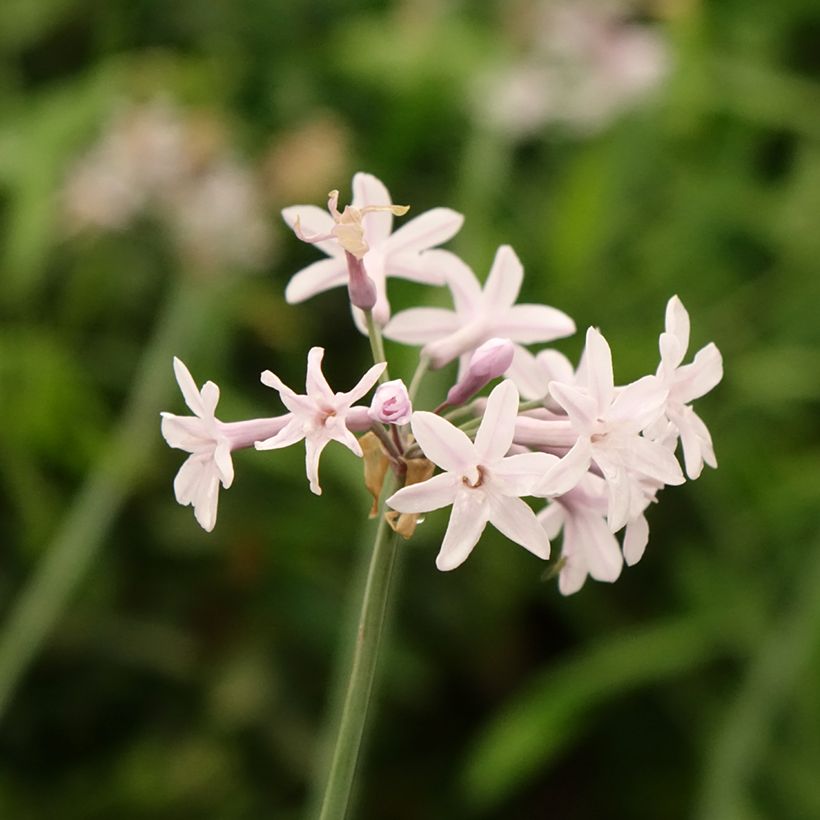



Plant habit
Flowering
Foliage
Botanical data
Tulbaghia
'Fairy Star'
Amaryllidaceae
Society Garlic
Tulbaghia 'Fairy Star'
Cultivar or hybrid
Other Tulbaghia
View all →Planting and care
Tulbaghia 'Fairy Star' thrives in very well-drained, slightly acidic, neutral or slightly alkaline soil. It prefers light, sandy soils. Its hardiness (-9°C) will be reduced in damp and poorly drained winter soil. A mix of leaf mould and sand makes an ideal growing medium. Choose a sunny position (or partial shade in our hottest and sunniest regions). It enjoys moist soil during its flowering period (spring-summer), but prefers drier conditions after flowering, in autumn and winter. It tolerates sea spray well. Transplant your young plants into a pot around 20cm in diameter containing 1/3 potting compost, 1/3 garden compost and 1/3 sand. Keep in a warm, well-lit spot (but out of direct sunlight) until the last frosts. You can then move your pot outdoors. Bring them back indoors at the start of autumn when temperatures begin to drop. In open ground, space the young plants 20cm apart.
In pots: During the growth period, water two to three times a week and apply a liquid fertiliser at least every fortnight to encourage good flowering. Reduce watering in winter. Repot every three years.
Planting period
Intended location
Care
Planting & care advice
This item has not been reviewed yet - be the first to leave a review about it.
Similar products
Haven't found what you were looking for?
Hardiness is the lowest winter temperature a plant can endure without suffering serious damage or even dying. However, hardiness is affected by location (a sheltered area, such as a patio), protection (winter cover) and soil type (hardiness is improved by well-drained soil).

Photo Sharing Terms & Conditions
In order to encourage gardeners to interact and share their experiences, Promesse de fleurs offers various media enabling content to be uploaded onto its Site - in particular via the ‘Photo sharing’ module.
The User agrees to refrain from:
- Posting any content that is illegal, prejudicial, insulting, racist, inciteful to hatred, revisionist, contrary to public decency, that infringes on privacy or on the privacy rights of third parties, in particular the publicity rights of persons and goods, intellectual property rights, or the right to privacy.
- Submitting content on behalf of a third party;
- Impersonate the identity of a third party and/or publish any personal information about a third party;
In general, the User undertakes to refrain from any unethical behaviour.
All Content (in particular text, comments, files, images, photos, videos, creative works, etc.), which may be subject to property or intellectual property rights, image or other private rights, shall remain the property of the User, subject to the limited rights granted by the terms of the licence granted by Promesse de fleurs as stated below. Users are at liberty to publish or not to publish such Content on the Site, notably via the ‘Photo Sharing’ facility, and accept that this Content shall be made public and freely accessible, notably on the Internet.
Users further acknowledge, undertake to have ,and guarantee that they hold all necessary rights and permissions to publish such material on the Site, in particular with regard to the legislation in force pertaining to any privacy, property, intellectual property, image, or contractual rights, or rights of any other nature. By publishing such Content on the Site, Users acknowledge accepting full liability as publishers of the Content within the meaning of the law, and grant Promesse de fleurs, free of charge, an inclusive, worldwide licence for the said Content for the entire duration of its publication, including all reproduction, representation, up/downloading, displaying, performing, transmission, and storage rights.
Users also grant permission for their name to be linked to the Content and accept that this link may not always be made available.
By engaging in posting material, Users consent to their Content becoming automatically accessible on the Internet, in particular on other sites and/or blogs and/or web pages of the Promesse de fleurs site, including in particular social pages and the Promesse de fleurs catalogue.
Users may secure the removal of entrusted content free of charge by issuing a simple request via our contact form.
The flowering period indicated on our website applies to countries and regions located in USDA zone 8 (France, the United Kingdom, Ireland, the Netherlands, etc.)
It will vary according to where you live:
- In zones 9 to 10 (Italy, Spain, Greece, etc.), flowering will occur about 2 to 4 weeks earlier.
- In zones 6 to 7 (Germany, Poland, Slovenia, and lower mountainous regions), flowering will be delayed by 2 to 3 weeks.
- In zone 5 (Central Europe, Scandinavia), blooming will be delayed by 3 to 5 weeks.
In temperate climates, pruning of spring-flowering shrubs (forsythia, spireas, etc.) should be done just after flowering.
Pruning of summer-flowering shrubs (Indian Lilac, Perovskia, etc.) can be done in winter or spring.
In cold regions as well as with frost-sensitive plants, avoid pruning too early when severe frosts may still occur.
The planting period indicated on our website applies to countries and regions located in USDA zone 8 (France, United Kingdom, Ireland, Netherlands).
It will vary according to where you live:
- In Mediterranean zones (Marseille, Madrid, Milan, etc.), autumn and winter are the best planting periods.
- In continental zones (Strasbourg, Munich, Vienna, etc.), delay planting by 2 to 3 weeks in spring and bring it forward by 2 to 4 weeks in autumn.
- In mountainous regions (the Alps, Pyrenees, Carpathians, etc.), it is best to plant in late spring (May-June) or late summer (August-September).
The harvesting period indicated on our website applies to countries and regions in USDA zone 8 (France, England, Ireland, the Netherlands).
In colder areas (Scandinavia, Poland, Austria...) fruit and vegetable harvests are likely to be delayed by 3-4 weeks.
In warmer areas (Italy, Spain, Greece, etc.), harvesting will probably take place earlier, depending on weather conditions.
The sowing periods indicated on our website apply to countries and regions within USDA Zone 8 (France, UK, Ireland, Netherlands).
In colder areas (Scandinavia, Poland, Austria...), delay any outdoor sowing by 3-4 weeks, or sow under glass.
In warmer climes (Italy, Spain, Greece, etc.), bring outdoor sowing forward by a few weeks.






























